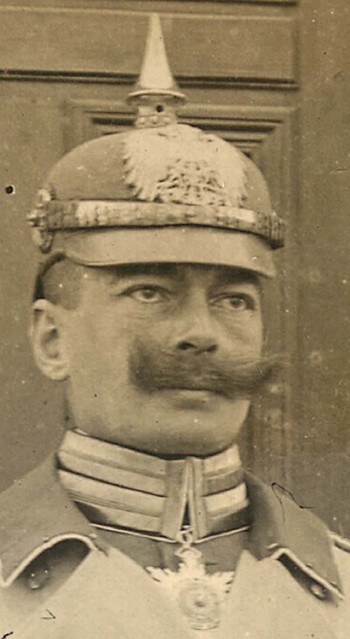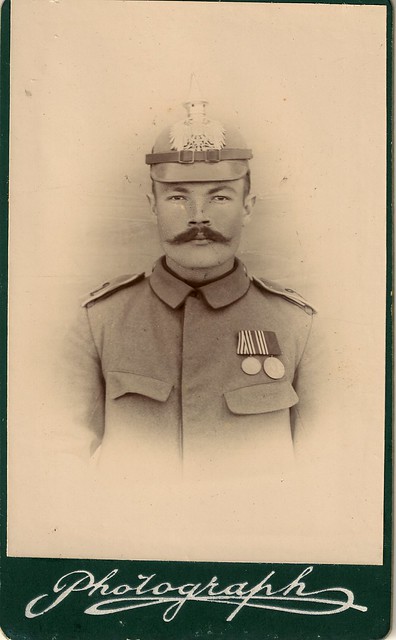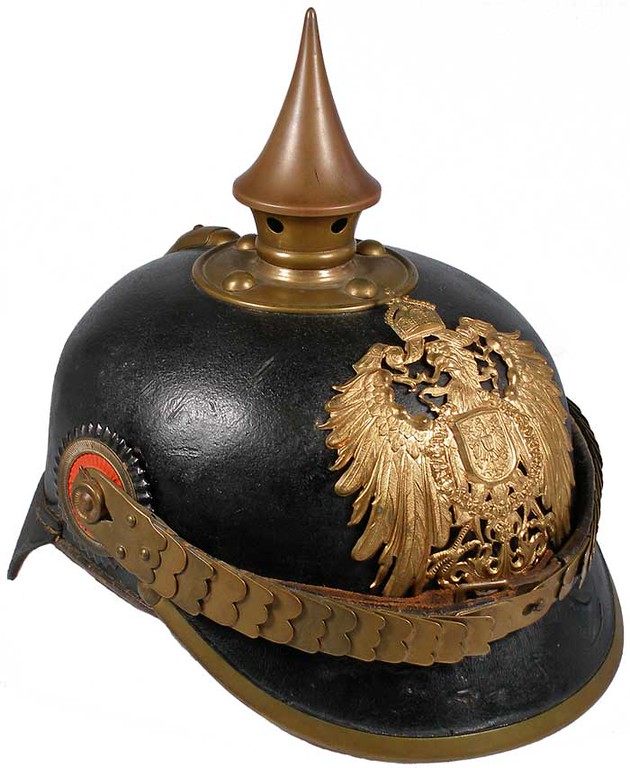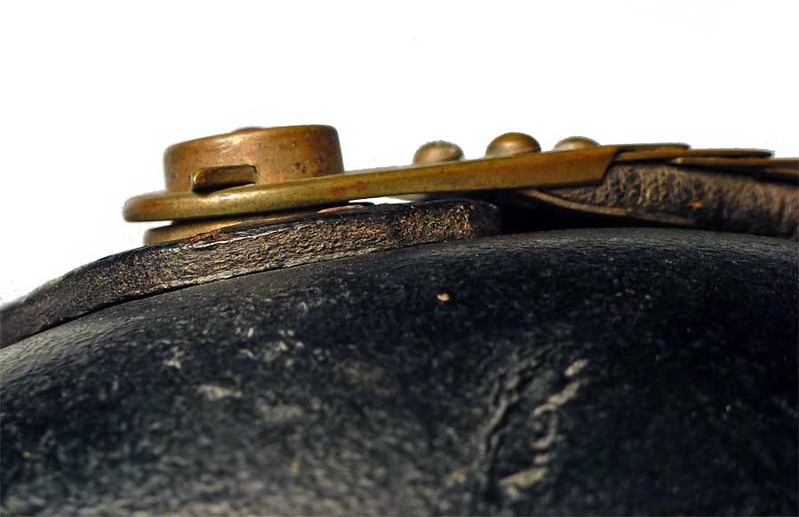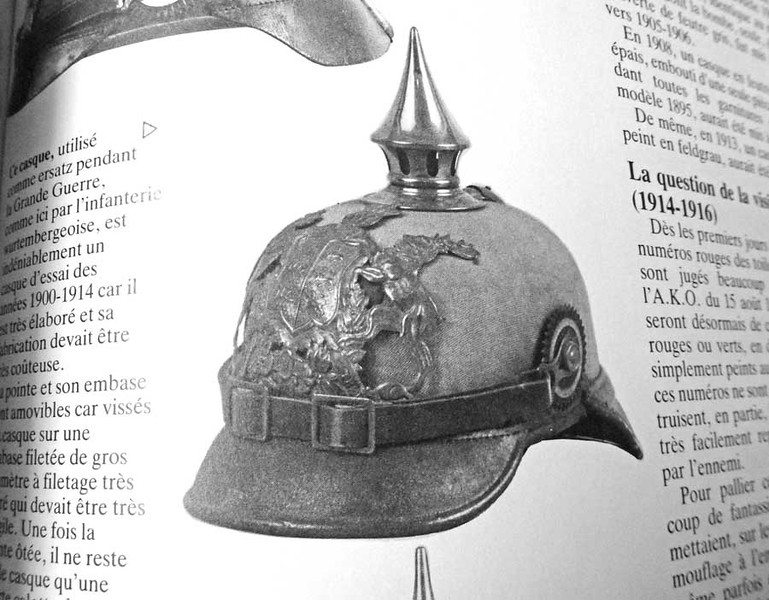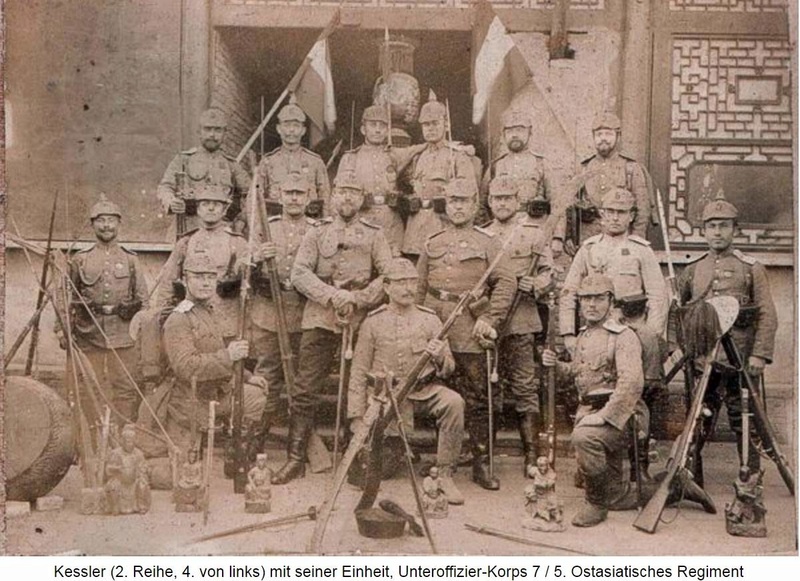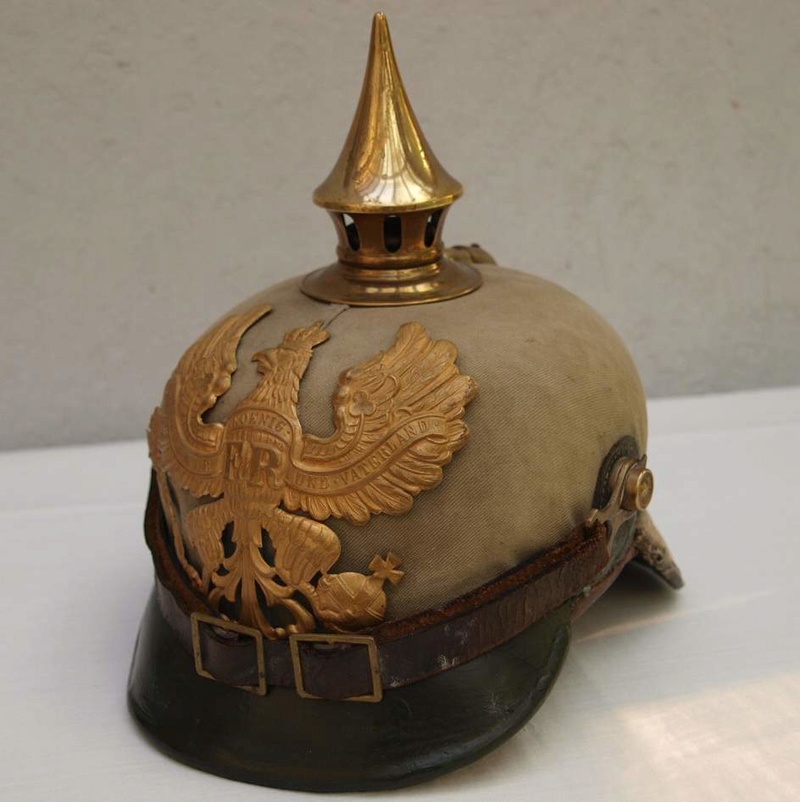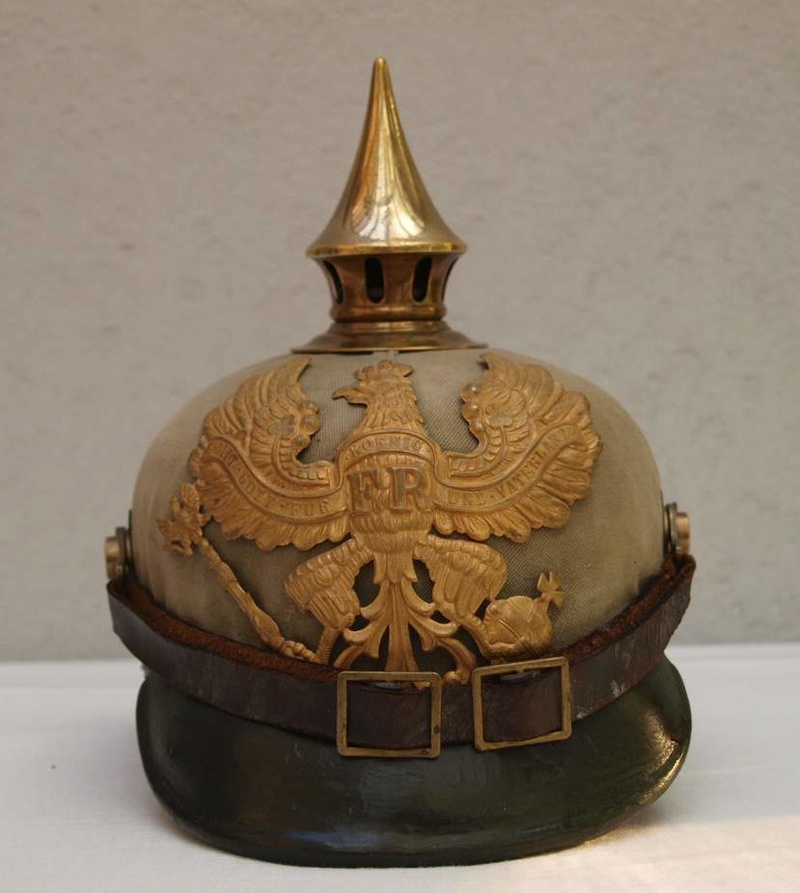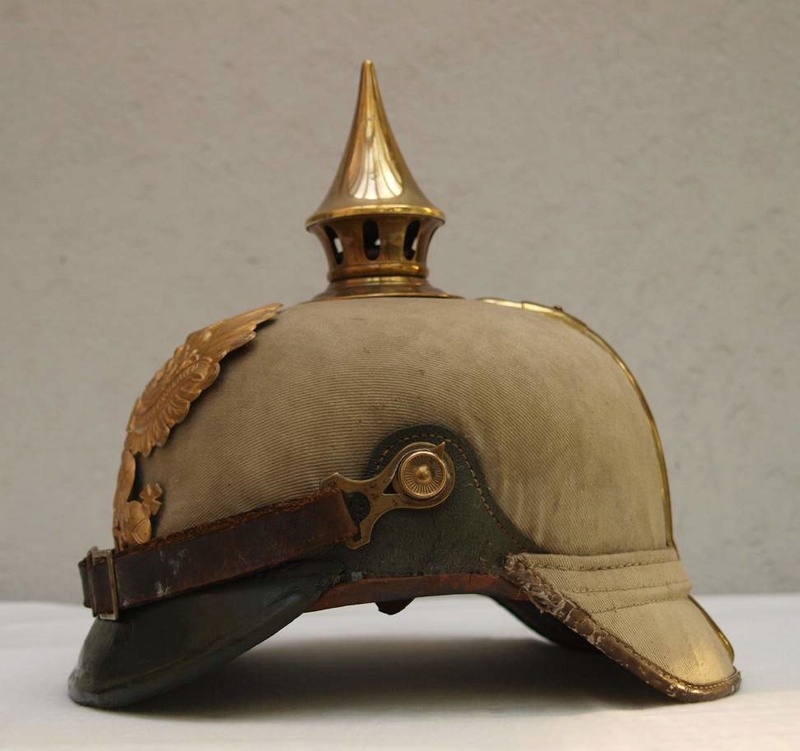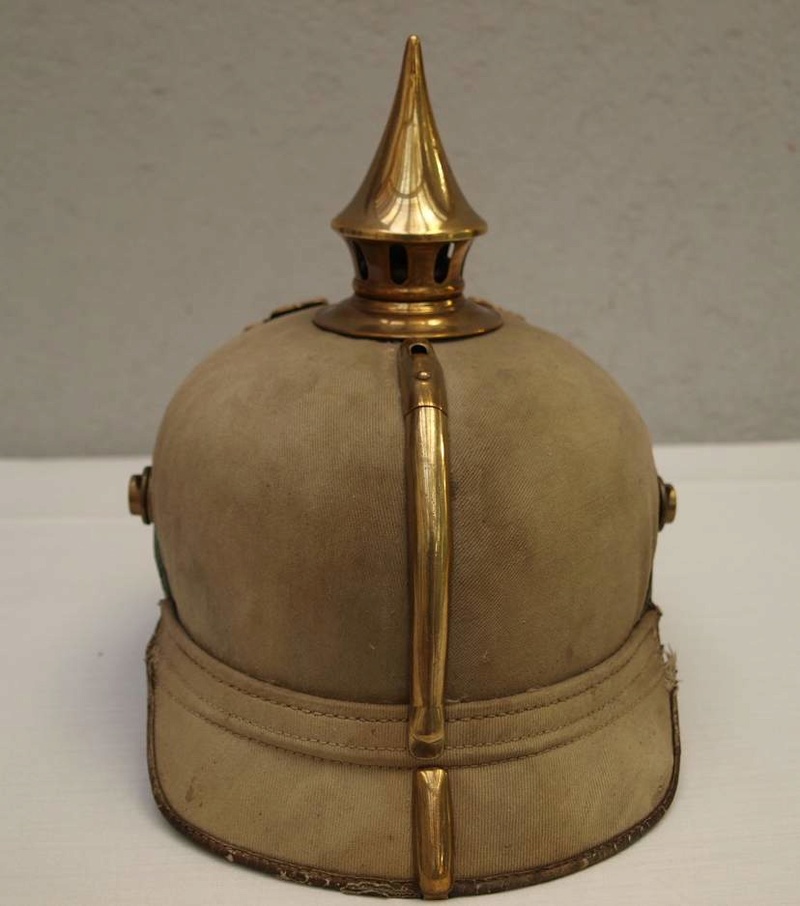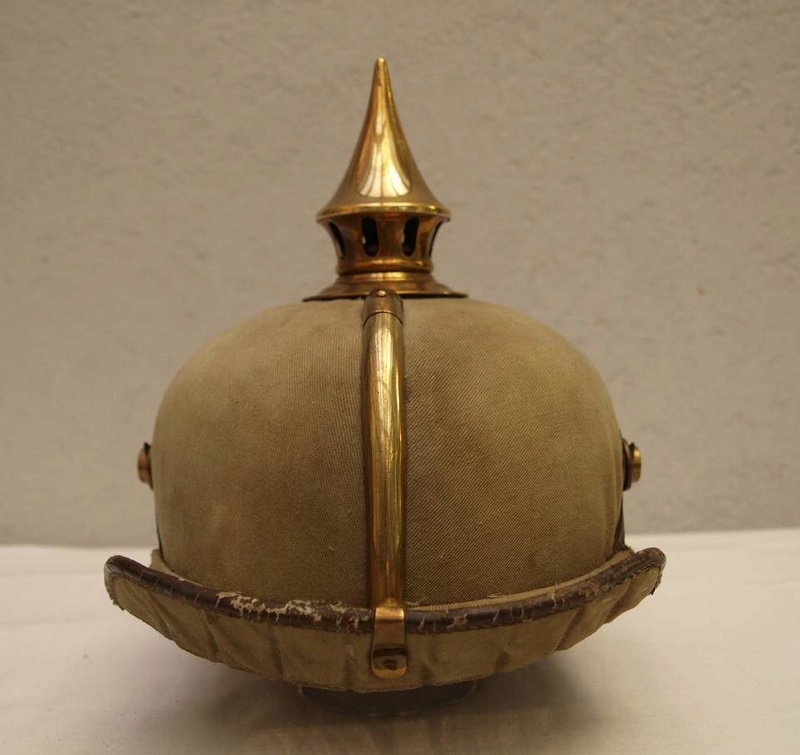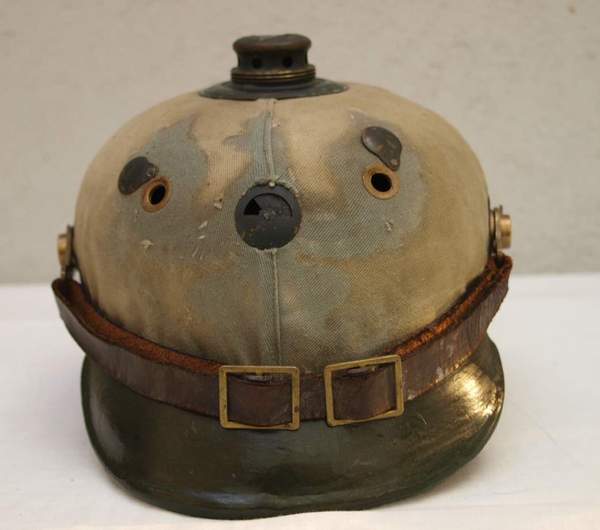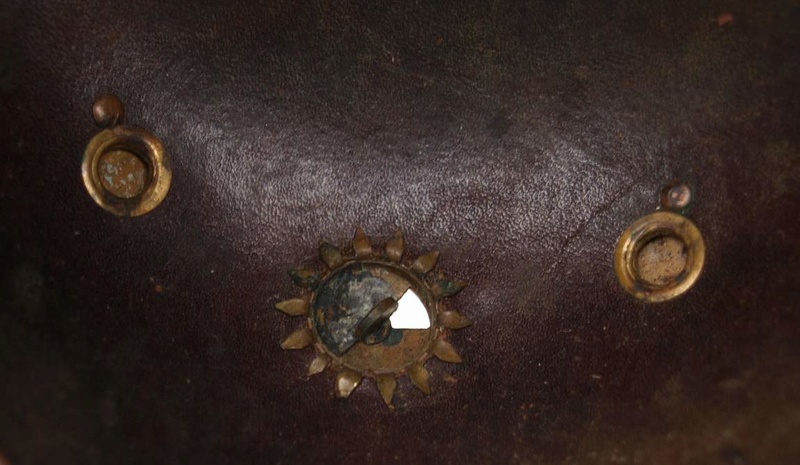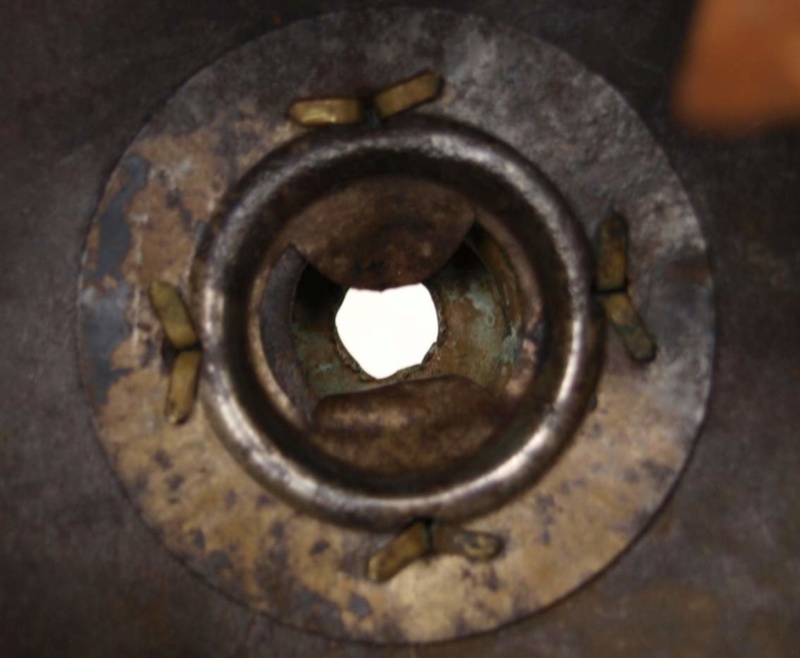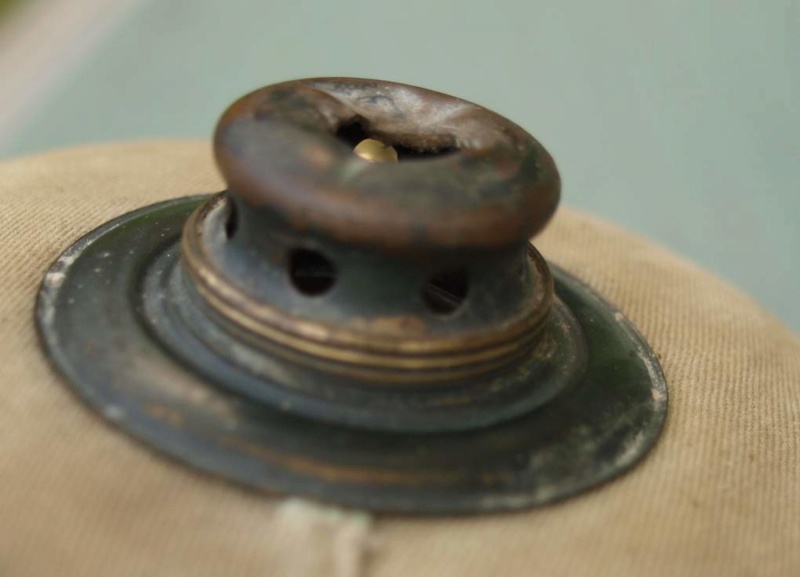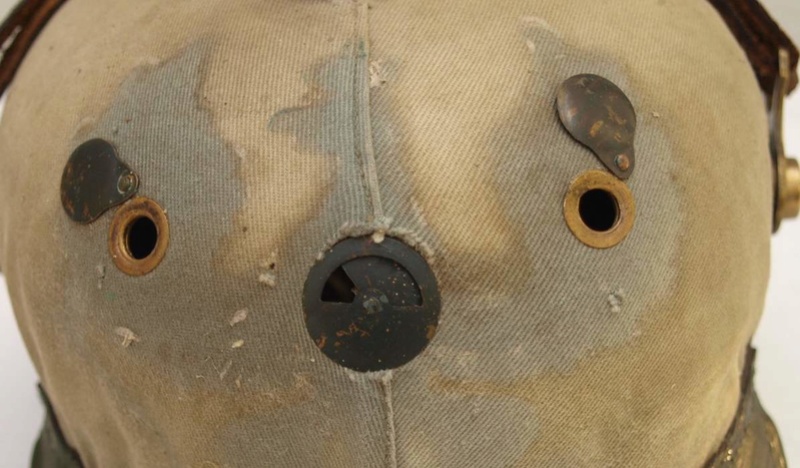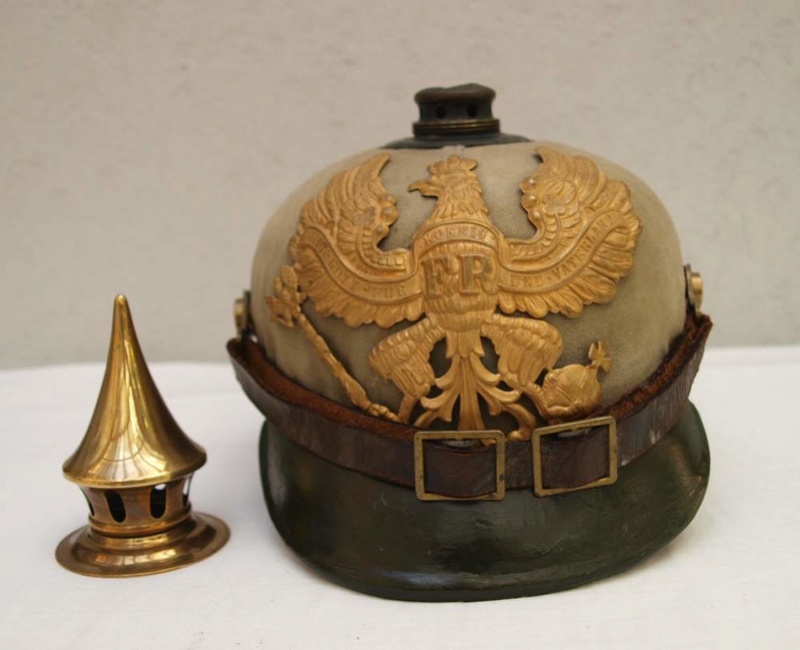Lost Skeleton
Well-known member
When I first ventured into this hobby, reference books were difficult to come by. Many of us are familiar with the curate's eggs of Bowman: Volumes 1 & 2, and Johansson, and, if we were fortunate, the solid efforts of Larcade and Lainé. Several impressive references have been published since, but I consider the books produced by Verlag Militaria to be without peer. I am a firm believer in the value of an extensive library and the Holmesian (Sherlock) philosophy, "Data! Data! Data!… I can't make bricks without clay." Consequently, I was ecstatic when Verlag published Dr. Jürgen Kraus' The German Colonial Troops from 1889 to 1918: History — Uniforms — Equipment in both English and German editions. For anyone interested in the Ostasiatische Expeditionskorps, the book is invaluable.
https://www.militaria.at/Book.aspx?book=20849400&Language=en" onclick="window.open(this.href);return false;
With respect to online references, we have this forum, Joe Robinson's Colonel J's, and, my favorite, Tony Schnurr's Kaiser's Bunker. With respect to the latter, I find myself frequently revisiting Tony's impressive Kaiser's Bunker Guide to the Evolution of the Preußen Pickelhaube 1842 - 1915, which brings me to the subject of this discussion. Though not a helmet originally developed for Prussian regiments, I would argue the Modell 1900 Pickelhaube deserves a place within this timeline as it was envisioned as being much more than the winter headdress of German colonial troops in China. This position is discussed in the Kraus reference, which devotes several illustrated pages to the M 1900.
Authorized by AKO in 1900 and first introduced in 1901, the Modell 1900 Fedgrau Pickelhaube, represents a radical departure from its immediate predecessor, the Modell 1895. Eschewing the traditional black lacquered leather shell, which incorporated a ventilated, brass reinforcement spine and brass visor trim, the design of the M 1900 hearkens back to the Preußen M 1887 helmet. What makes the M 1900 unique, however, is the first-ever adoption of field grey as an approved color for combat wear. Furthermore, both the spike and Imperial troops Reichsadler Wappen were designed for expedient removal, thereby facilitating a further measure of camouflage. This will be discussed in detail with the accompanying photographs. For illustration, I am using an Ostasiatische Expeditionskorps M 1900 in my collection. The helmet displays all the characteristics of the other ranks issue pattern — with a twist. The spike is the style worn by officers. How they came to be mated is anybody's guess, but it is not the only feature that sets this helmet apart.
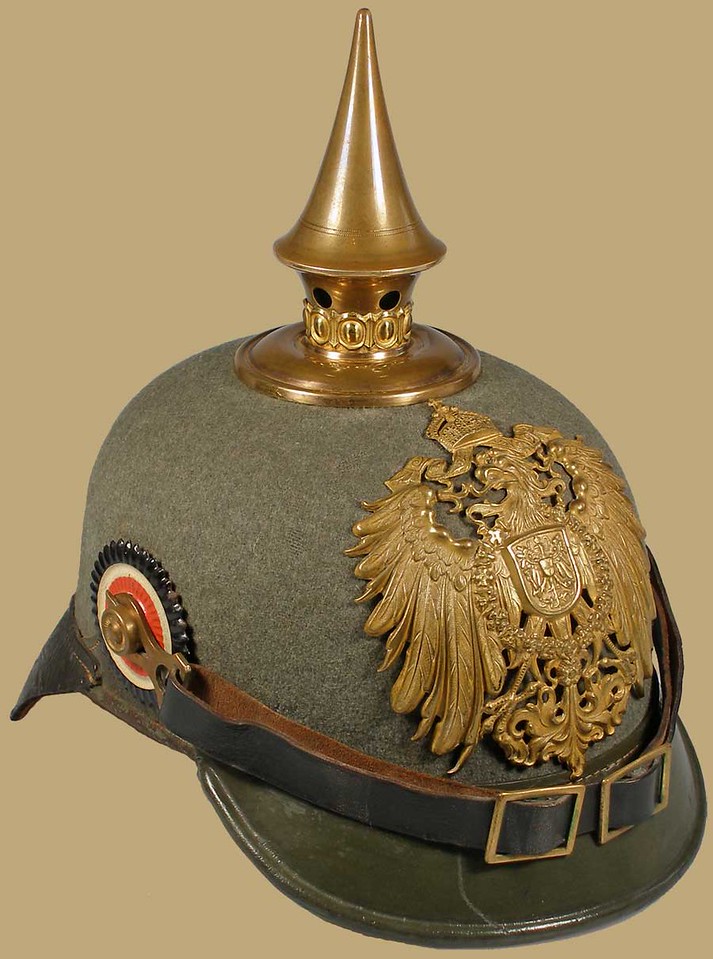
Not to be confused with the later ersatz Filzhelm, the M 1900 is an all leather helmet with Feldgrau felt cloth applied to the Korpus. The Schirm, Hinterschirm, and Ohrleder (to which the Knopf 91 are anchored) are painted olive drab. Original helmets are not green painted over black.
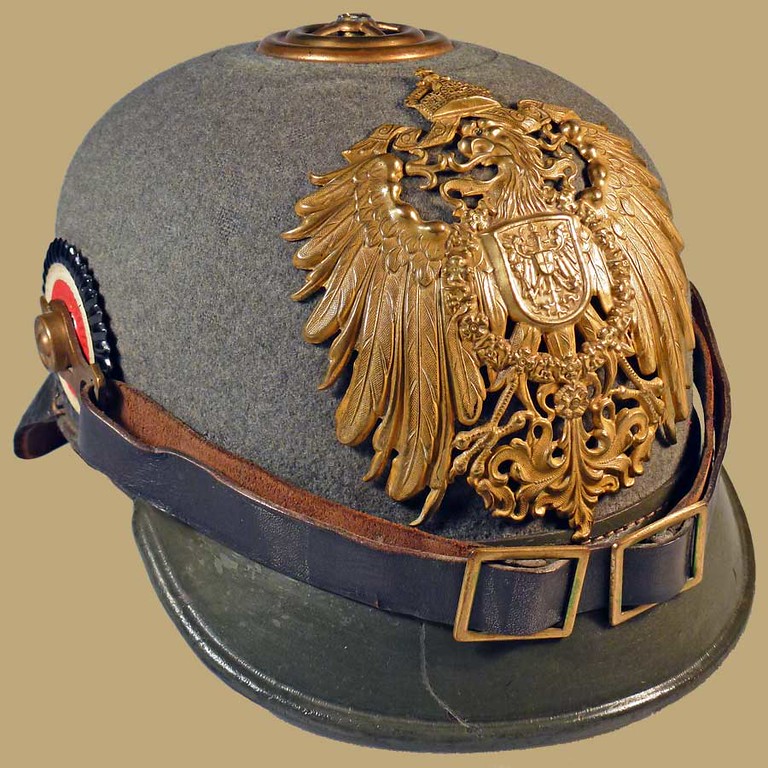
The helmet with spike removed: The spike threads directly to the crosspiece of the ventilation hole. When removed, the spike was replaced with a Feldgrau painted, domed metal cap that could be stored inside the helmet by threading it to the interior side of the crosspiece. To see a photograph of the cap, click HERE. As specified by the AKO, the Reichsadler was fitted to the helmet using long, flat brass prongs, which passed through slotted mounts attached to the outside of the helmet. This same system was employed by the Preußen M 1867 Pickelhaube. The purpose was to allow the wearer to remove the brass accoutrement in a matter of seconds and thereby reduce the helmet's visibility to the enemy. Because the helmet was already Feldgrau in color, it was never issued with an Überzug
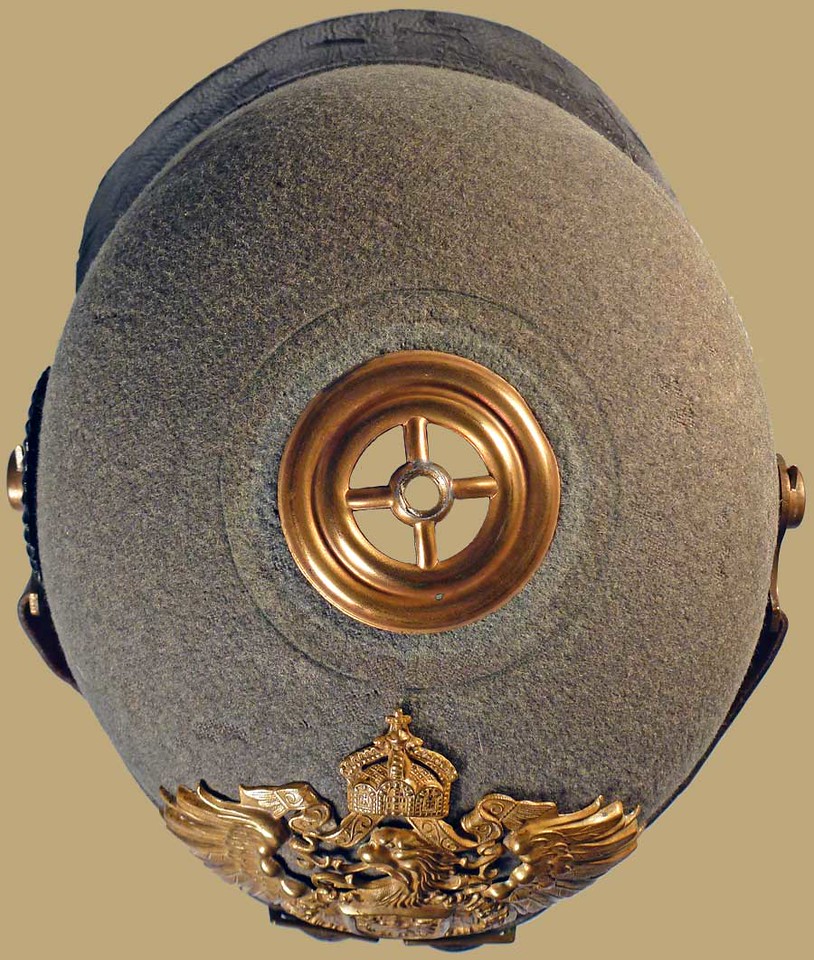
Top view
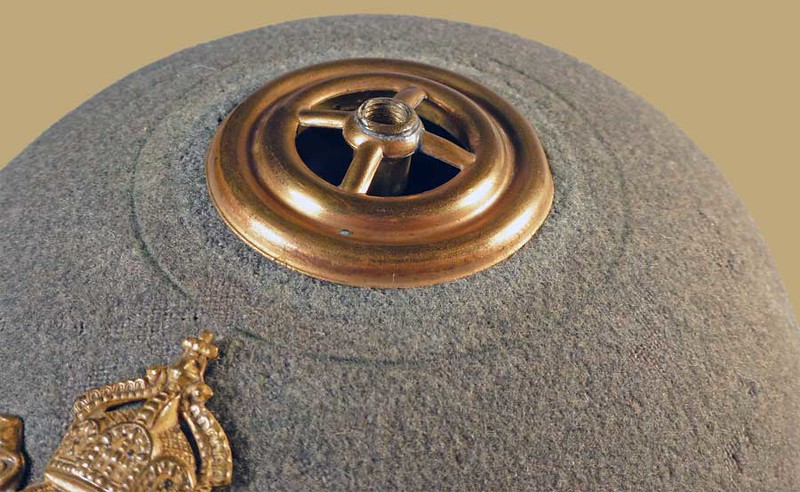
Closeup: From the "fade line" in the Feldgrau cloth surrounding the ventilator, one can conclude this helmet saw either considerable use or display with the metal ventilator cap in place. The threaded brass bushing that receives the spike is a soldered insert. The impression left by the outer lip of the circular spike base is also readily visible.
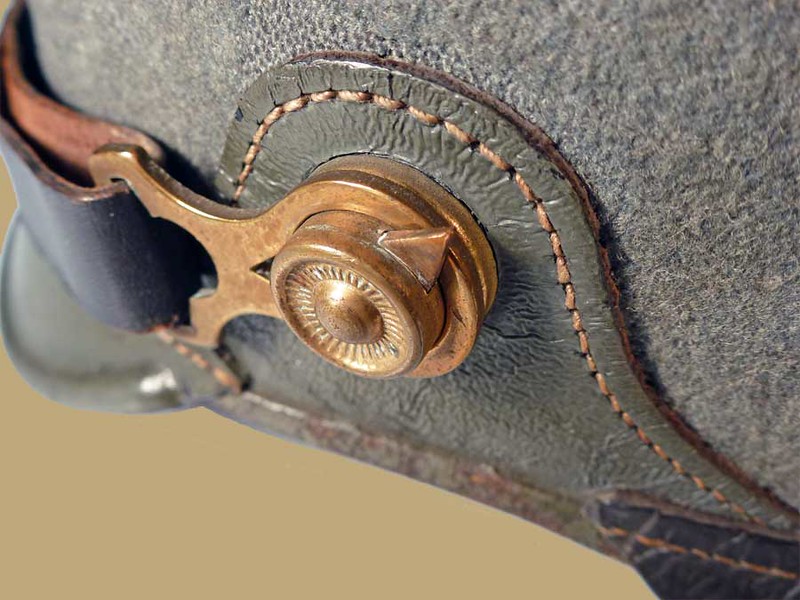
Unlike the Preußen M 1887 Pickelhaube, which utilized a highly unsatisfactory hook and eye chinstrap retainer, the M 1900 employs the Knopf 91 system. The other ranks leather chinstrap is fitted with a thin (1.5mm) keeper. This matches the tolerance of the chinscale keeper found on Pickelhauben worn by Reichs-Gendarmerie foot troops of Elsaß-Lothringen — meaning that a specific standard may have been established for helmets worn by the military and civilian contingents of the Reich. In other words, there is no appreciable difference between Reichs-Gendarmerie other ranks chinscales and Ostasiatische Expeditionskorps officer chinscales. Note the green painted Ohrleder. The natural thread color is proof that the Schirm, Hinterschirm, and Ohrleder were sewn to the helmet after painting.
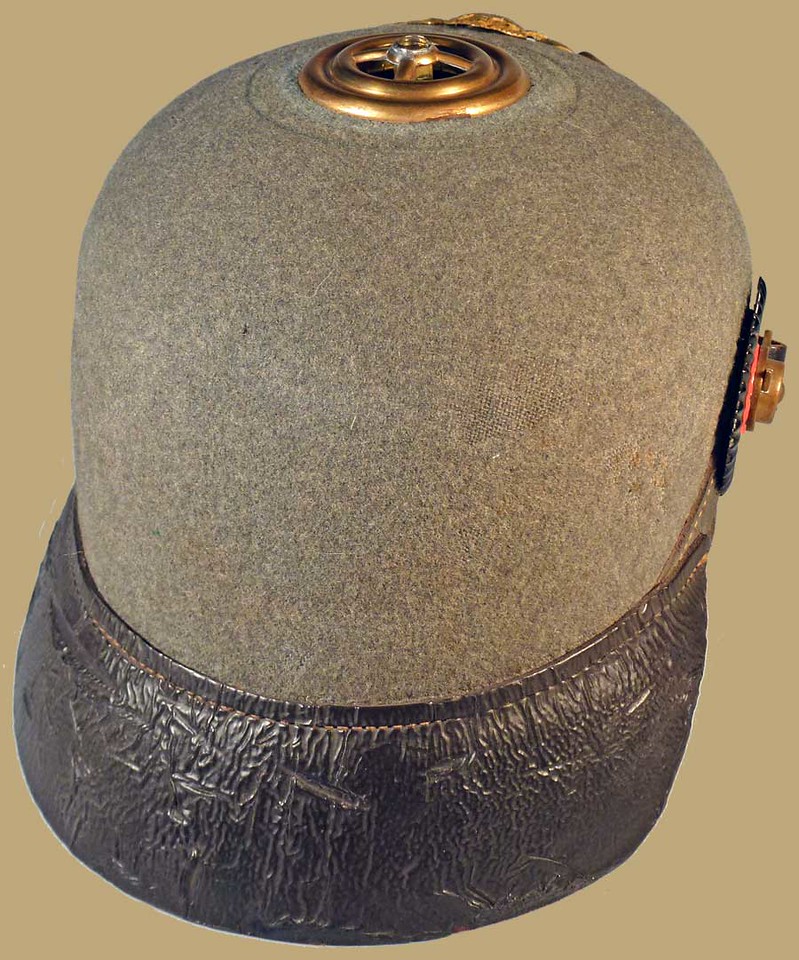
Back of the helmet: For whatever reasons, the Hinterschirm of this helmet is a darker shade of olive drab. The absence of a rear spine represents both a conscious attempt to reduce the quantity of brass used in helmet manufacture and to render the helmet more field serviceable.
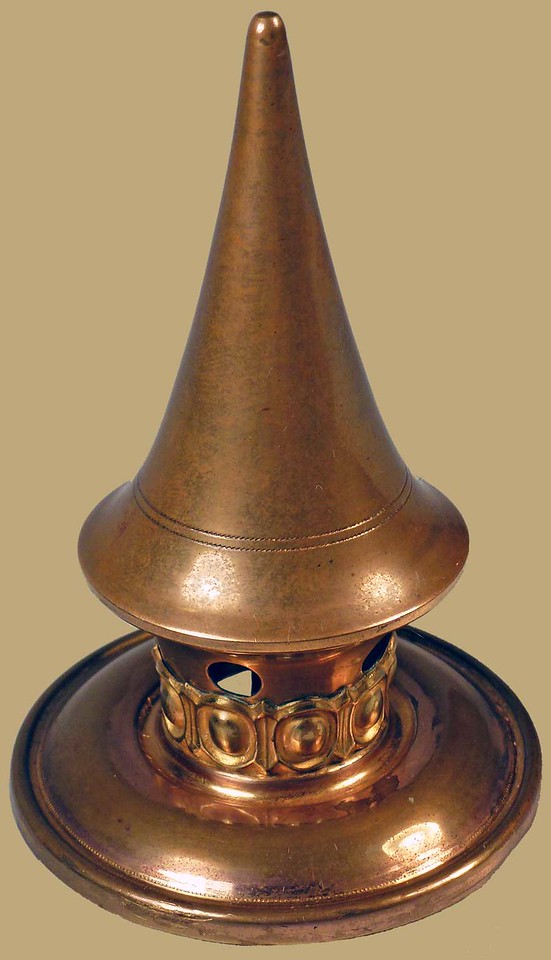
The removable officer pattern gilt spike: The central threaded rod eliminates the need for the customary star retainers.
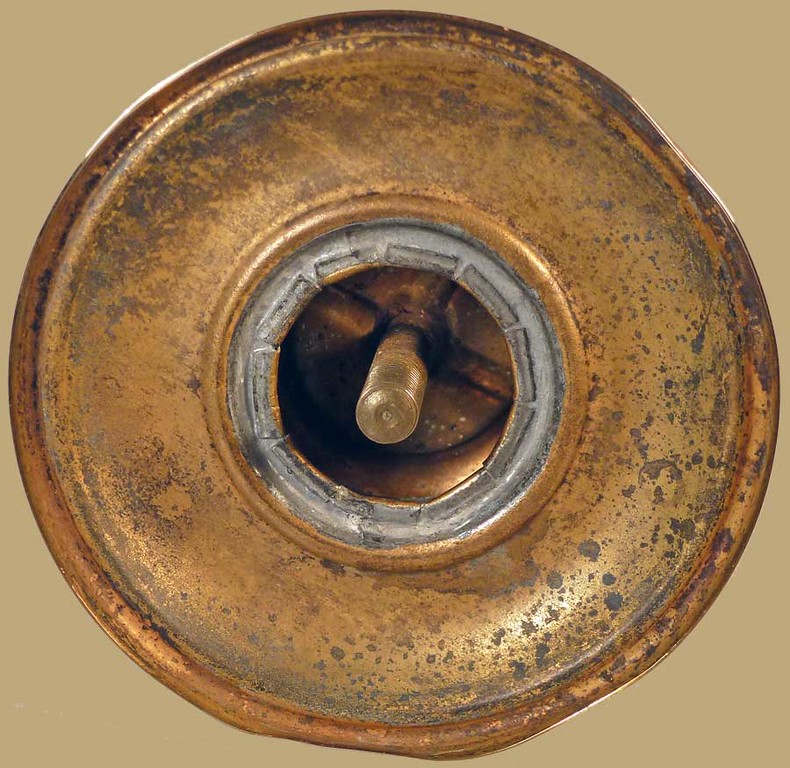
Note the neat soldering of the bras tabs that fit the spike neck to the base.
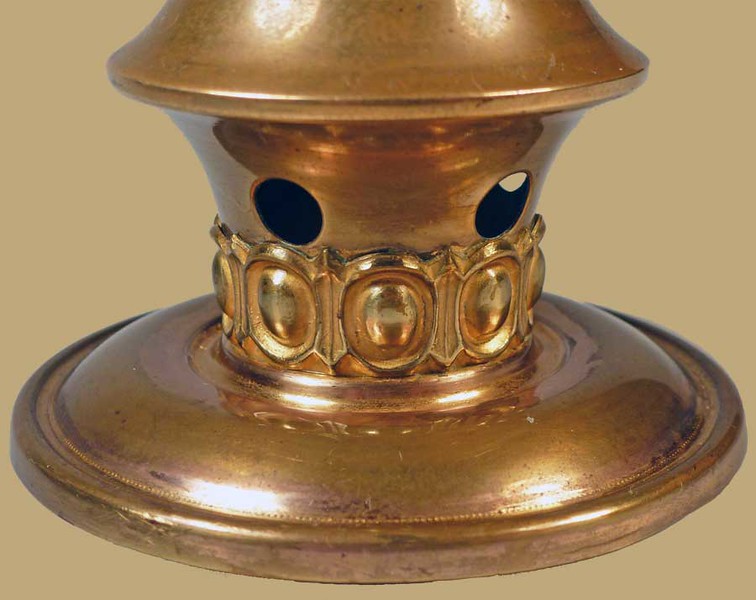
The spike neck features five ventilation holes (rather than the customary two for officers).
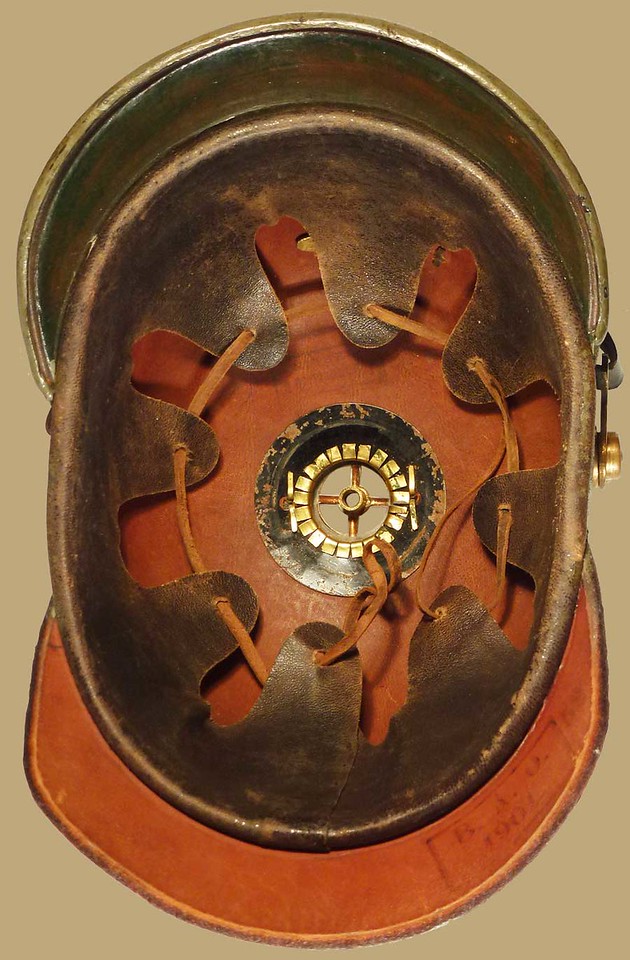
Helmet interior: Illustrating the manner by which the ventilator is attached. One suspects the underside of the Schirm is green for the same reasons as a modern baseball cap.
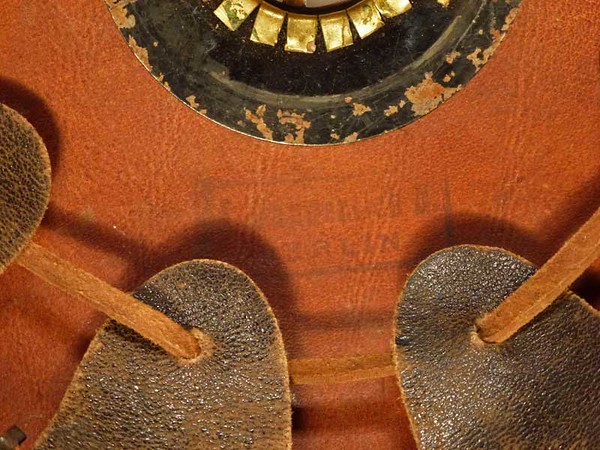
The manufacturer of this helmet — A. Wunderlich N. BERLIN. Kraus indicates that at least three firms were engaged in the production of the M 1900.
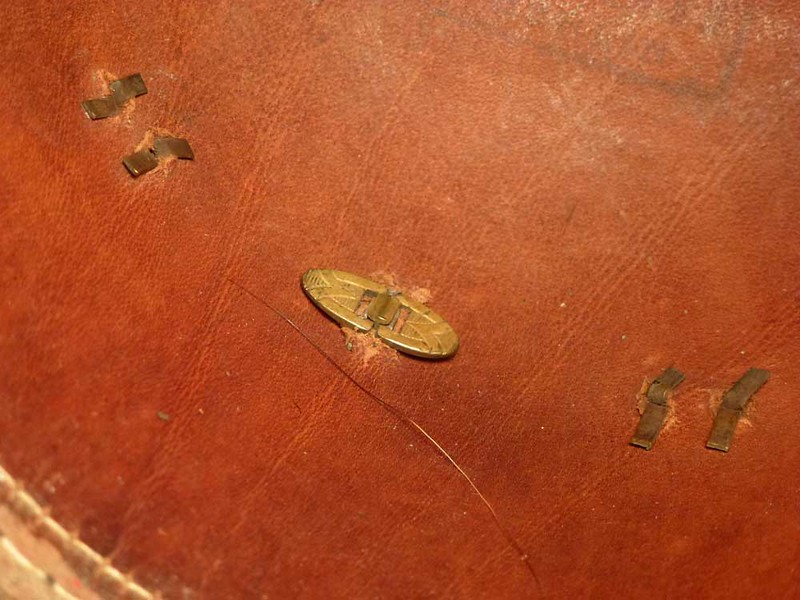
The Wappen attachment system viewed from the interior: The steel split prongs on either side correspond the the slotted mounts on the exterior of the helmet. The decorative brass folding lock in the center helps secure the Wappen firmly in place. I have never removed the Reichsadler from the helmet for fear of damaging something. I would like to see it as much as anybody, but the helmet is simply too valuable to mess about with. For those interested in DNA, a single strand of hair is available for testing.
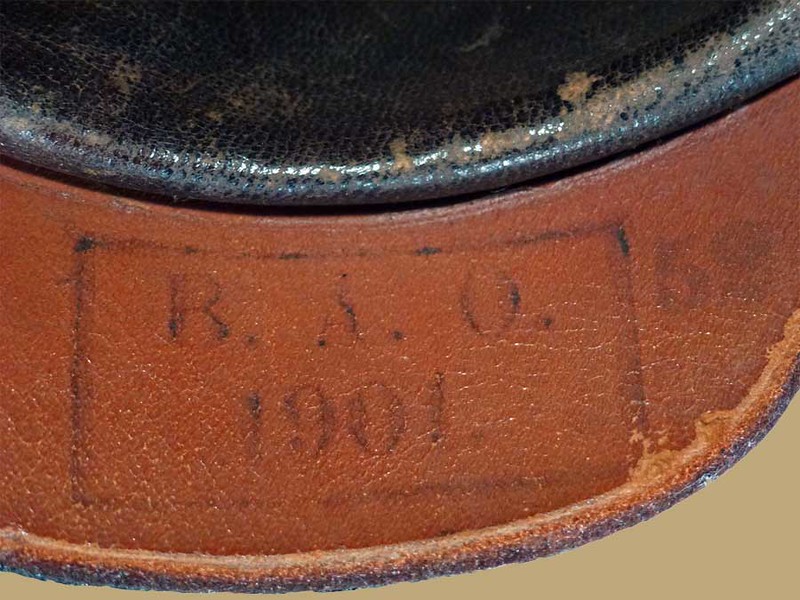
Finally, the Abnahmestempel: B.A.O. (Bekleidungs-Amt-Ostasien) 1901. Size 52 is exceedingly small.
CONCLUSIONS: The Modell 1900 Feldgrau Pickelhaube, though influenced by the past, was forward thinking. Incorporating elements of Preußen Modelle 1867, 1887, and 1891 helmets, the M 1900 represents the initial use by the German military of a field grey helmet. It was designed so that the spike, Reichsadler Wappen, and chinstrap/chinscales were easy to remove and provided a universal fit for both other ranks and officer helmets. In this sense, the M 1900 anticipates the innovations of the M 1915 Pickelhaube, which made the bayonet spike mount and Knopf 91 universal for helmets of all ranks. It was further intended that the M 1900 Pickelhaube would eventually replace the M 1895 helmet for mounted and foot troops of the regular army, and several Probe examples exist. Because it was never adopted, the helmet is now largely ignored. I consider myself fortunate to have one in my collection.
Chas
https://www.militaria.at/Book.aspx?book=20849400&Language=en" onclick="window.open(this.href);return false;
With respect to online references, we have this forum, Joe Robinson's Colonel J's, and, my favorite, Tony Schnurr's Kaiser's Bunker. With respect to the latter, I find myself frequently revisiting Tony's impressive Kaiser's Bunker Guide to the Evolution of the Preußen Pickelhaube 1842 - 1915, which brings me to the subject of this discussion. Though not a helmet originally developed for Prussian regiments, I would argue the Modell 1900 Pickelhaube deserves a place within this timeline as it was envisioned as being much more than the winter headdress of German colonial troops in China. This position is discussed in the Kraus reference, which devotes several illustrated pages to the M 1900.
Authorized by AKO in 1900 and first introduced in 1901, the Modell 1900 Fedgrau Pickelhaube, represents a radical departure from its immediate predecessor, the Modell 1895. Eschewing the traditional black lacquered leather shell, which incorporated a ventilated, brass reinforcement spine and brass visor trim, the design of the M 1900 hearkens back to the Preußen M 1887 helmet. What makes the M 1900 unique, however, is the first-ever adoption of field grey as an approved color for combat wear. Furthermore, both the spike and Imperial troops Reichsadler Wappen were designed for expedient removal, thereby facilitating a further measure of camouflage. This will be discussed in detail with the accompanying photographs. For illustration, I am using an Ostasiatische Expeditionskorps M 1900 in my collection. The helmet displays all the characteristics of the other ranks issue pattern — with a twist. The spike is the style worn by officers. How they came to be mated is anybody's guess, but it is not the only feature that sets this helmet apart.

Not to be confused with the later ersatz Filzhelm, the M 1900 is an all leather helmet with Feldgrau felt cloth applied to the Korpus. The Schirm, Hinterschirm, and Ohrleder (to which the Knopf 91 are anchored) are painted olive drab. Original helmets are not green painted over black.

The helmet with spike removed: The spike threads directly to the crosspiece of the ventilation hole. When removed, the spike was replaced with a Feldgrau painted, domed metal cap that could be stored inside the helmet by threading it to the interior side of the crosspiece. To see a photograph of the cap, click HERE. As specified by the AKO, the Reichsadler was fitted to the helmet using long, flat brass prongs, which passed through slotted mounts attached to the outside of the helmet. This same system was employed by the Preußen M 1867 Pickelhaube. The purpose was to allow the wearer to remove the brass accoutrement in a matter of seconds and thereby reduce the helmet's visibility to the enemy. Because the helmet was already Feldgrau in color, it was never issued with an Überzug

Top view

Closeup: From the "fade line" in the Feldgrau cloth surrounding the ventilator, one can conclude this helmet saw either considerable use or display with the metal ventilator cap in place. The threaded brass bushing that receives the spike is a soldered insert. The impression left by the outer lip of the circular spike base is also readily visible.

Unlike the Preußen M 1887 Pickelhaube, which utilized a highly unsatisfactory hook and eye chinstrap retainer, the M 1900 employs the Knopf 91 system. The other ranks leather chinstrap is fitted with a thin (1.5mm) keeper. This matches the tolerance of the chinscale keeper found on Pickelhauben worn by Reichs-Gendarmerie foot troops of Elsaß-Lothringen — meaning that a specific standard may have been established for helmets worn by the military and civilian contingents of the Reich. In other words, there is no appreciable difference between Reichs-Gendarmerie other ranks chinscales and Ostasiatische Expeditionskorps officer chinscales. Note the green painted Ohrleder. The natural thread color is proof that the Schirm, Hinterschirm, and Ohrleder were sewn to the helmet after painting.

Back of the helmet: For whatever reasons, the Hinterschirm of this helmet is a darker shade of olive drab. The absence of a rear spine represents both a conscious attempt to reduce the quantity of brass used in helmet manufacture and to render the helmet more field serviceable.

The removable officer pattern gilt spike: The central threaded rod eliminates the need for the customary star retainers.

Note the neat soldering of the bras tabs that fit the spike neck to the base.

The spike neck features five ventilation holes (rather than the customary two for officers).

Helmet interior: Illustrating the manner by which the ventilator is attached. One suspects the underside of the Schirm is green for the same reasons as a modern baseball cap.

The manufacturer of this helmet — A. Wunderlich N. BERLIN. Kraus indicates that at least three firms were engaged in the production of the M 1900.

The Wappen attachment system viewed from the interior: The steel split prongs on either side correspond the the slotted mounts on the exterior of the helmet. The decorative brass folding lock in the center helps secure the Wappen firmly in place. I have never removed the Reichsadler from the helmet for fear of damaging something. I would like to see it as much as anybody, but the helmet is simply too valuable to mess about with. For those interested in DNA, a single strand of hair is available for testing.

Finally, the Abnahmestempel: B.A.O. (Bekleidungs-Amt-Ostasien) 1901. Size 52 is exceedingly small.
CONCLUSIONS: The Modell 1900 Feldgrau Pickelhaube, though influenced by the past, was forward thinking. Incorporating elements of Preußen Modelle 1867, 1887, and 1891 helmets, the M 1900 represents the initial use by the German military of a field grey helmet. It was designed so that the spike, Reichsadler Wappen, and chinstrap/chinscales were easy to remove and provided a universal fit for both other ranks and officer helmets. In this sense, the M 1900 anticipates the innovations of the M 1915 Pickelhaube, which made the bayonet spike mount and Knopf 91 universal for helmets of all ranks. It was further intended that the M 1900 Pickelhaube would eventually replace the M 1895 helmet for mounted and foot troops of the regular army, and several Probe examples exist. Because it was never adopted, the helmet is now largely ignored. I consider myself fortunate to have one in my collection.
Chas

